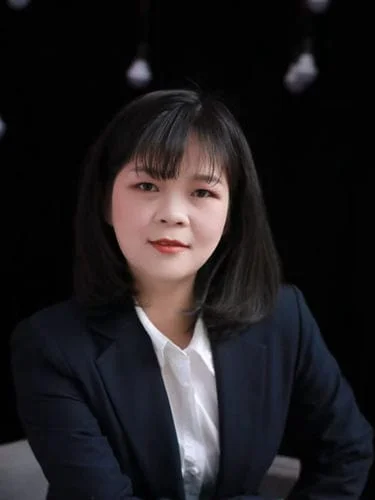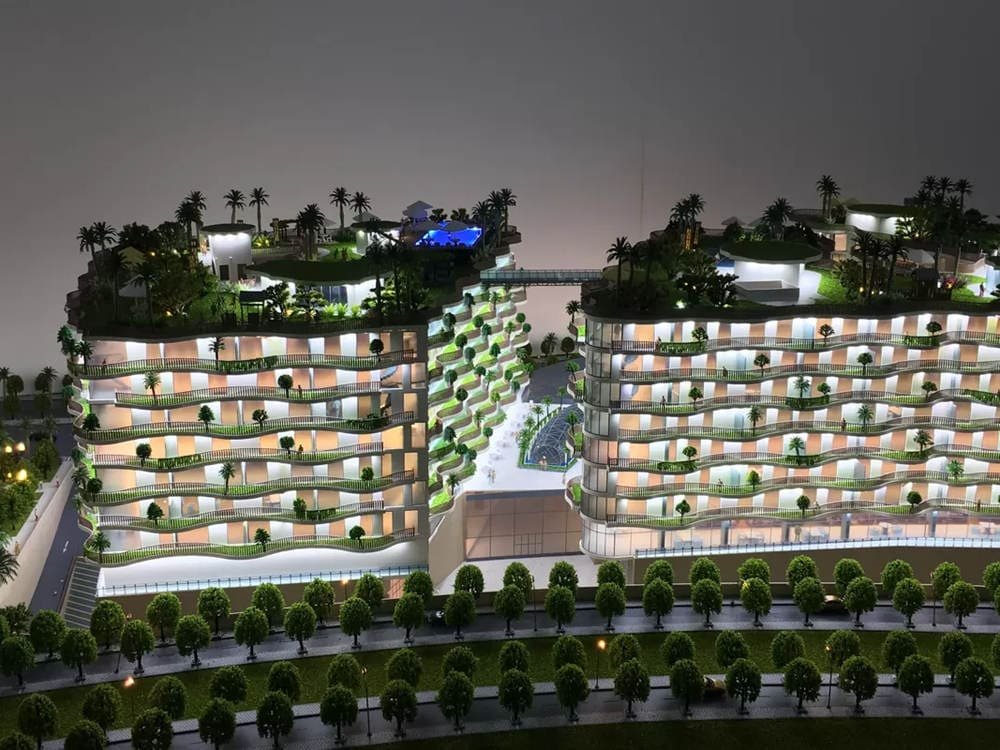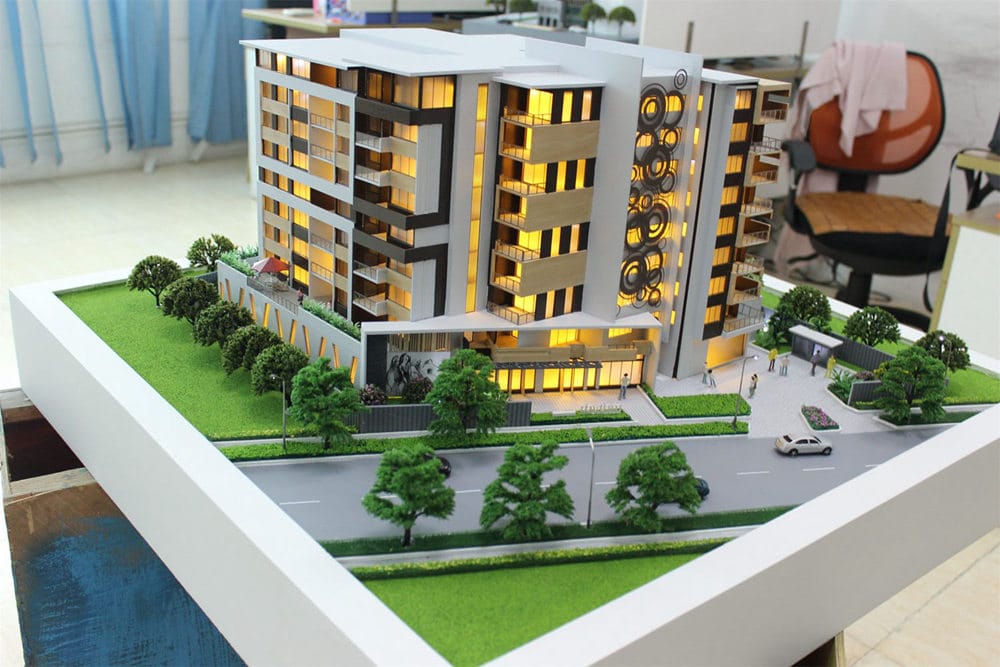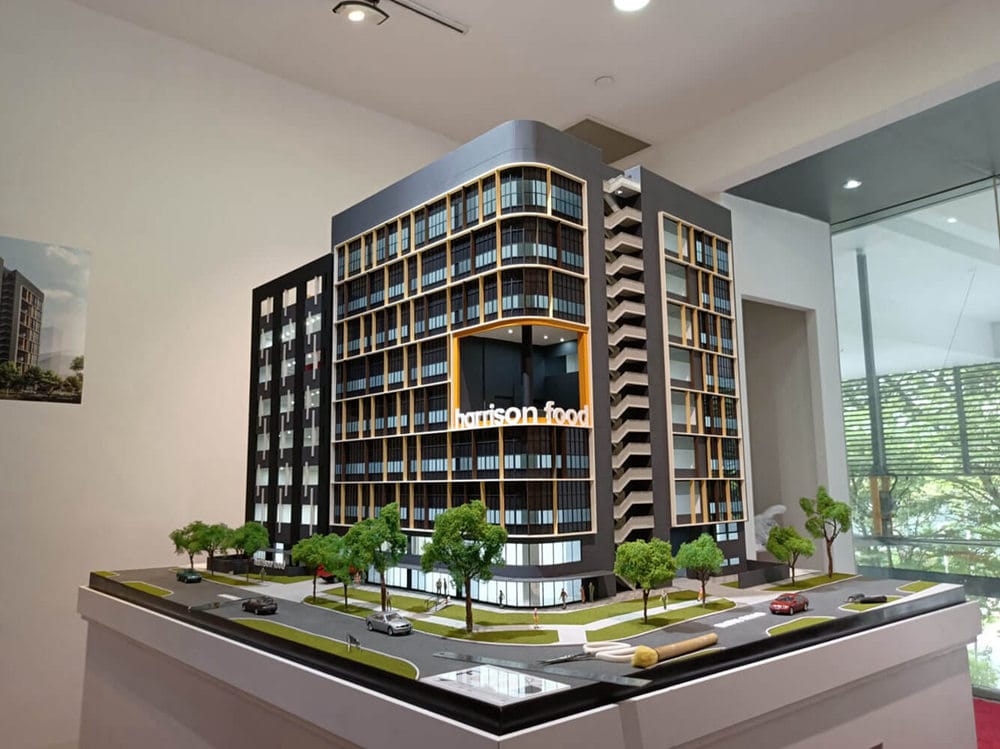~ 안에 건축 모델 제작, 올바른 자료를 선택하는 것이 중요합니다, 최종 제품의 모든 측면에 영향을 미치는 전략적 결정. 단순한 미학을 훨씬 넘어서는; 디자인 프로세스의 각 단계에서 원하는 결과를 달성하는 데 매우 중요합니다.. 에서 개념적 모델 같은 저렴한 재료를 사용하여 폼 보드 그리고 판지 에게 프레젠테이션 모델 다음과 같은 보다 세련된 옵션이 필요합니다. 아크릴 그리고 목재, 재료 선택이 영향을 미침 내구성, 정도, 그리고 미적 매력. 더욱 더, 친환경 자료 좋다 재활용 플라스틱 그리고 생분해성 폼 지속 가능한 디자인에 대한 관심을 얻고 있습니다.. 처리 방법 이해, 자르다, 그리고 이 재료들을 접착하세요, 일반적인 실수를 피하는 동시에, 모델의 수준을 높이는 데 도움이 됩니다.. 재료를 이용한 실험과 유연성은 두 가지 모두를 향상시킬 수 있습니다. 디자인 표현 모델 품질. 이 가이드는 다음 프로젝트를 위해 정보에 입각한 선택을 내리는 데 필요한 전문적인 통찰력을 제공합니다..
목차
건축 모델에서 재료 선택의 중요성
재료: 모든 건축 모델의 기초
건축모델의 경우, 재료는 단지 건축에 사용되는 "재료" 그 이상입니다.. 그들은 디자인 과정의 숨은 영웅입니다, 개념이 어떻게 인식되는지 형성, 이해했다, 그리고 경험이 풍부한. 올바른 재료를 사용하면 간단한 스케치를 실질적인 예술 작품으로 바꿀 수 있습니다., 디자인의 영혼을 이끌어내고 페이지 밖으로 도약하도록 돕습니다. (아니면 화면, 아니면 제도 테이블) 그리고 현실 세계로. 제대로 된 재료 없이, 아무리 뛰어난 건축 아이디어라도 무너질 수 있습니다. 마치 유사 위에 집을 짓는 것과 같습니다.. 이는 당사의 필라 페이지에서 소개하는 기본 주제입니다., 고급 건축 모델에 대한 궁극적 인 가이드.
재료 선택이 중요한 이유? 잘, 매끄럽게 전달하려고 상상해보십시오., 판지처럼 보이고 느껴지는 고층 건물의 현대적인 라인. 당신이 목표로 하는 메시지와는 거리가 멀다, 오른쪽? 재료는 건물의 물리적 특성을 나타내는 것 이상을 수행합니다. 규모, 형태, 조직, 그리고 디자인 의도 구조 뒤에. 재료는 당신의 비전을 현실로 만들고 당신이 전달하려는 꿈을 다른 사람들이 이해하도록 돕습니다..
올바른 재료는 또한 분위기 그리고 감정 당신의 모델. 당신이 부드러운 것을 사용하고 있는지 여부, 모던함이나 소박함을 전달하는 아크릴의 투명한 마감, 나무의 자연스러운 느낌이 따뜻함과 지속가능성을 불러일으킵니다., 각 재료 선택은 디자인에 대한 메시지를 보냅니다.. 그리고 미학을 넘어서, 재료는 기능 면에서도 중요한 역할을 하며 구조적 아이디어를 테스트하는 데 도움이 됩니다., 비율을 보여주다, 최종 제품이 그 뒤에 숨은 비전만큼 견고한지 확인하세요..
기사의 목적: 재료 선택을 위한 궁극적인 가이드
그래서, 오늘 우리가 건축 모델 재료에 대해 이야기하는 이유는 무엇입니까?? 대답은 간단하다: 올바른 재료를 선택하는 것은 그림에 적합한 색상 팔레트를 선택하는 것과 같습니다.. 올바른 메시지를 전달하는 것이 중요합니다, 올바른 방법으로, 적절한 시간에. 당신이 어떤 일을 하고 있든 개념적 모델 새로운 아이디어를 테스트하거나 최종 프레젠테이션 모델 고객을 유치하는 데 사용됩니다, 선택한 재료는 디자인이 인식되는 방식에 직접적인 영향을 미칩니다.
이 기사에서, 건축 모델 제작에 사용할 수 있는 재료의 미로를 안내해 드리겠습니다.. 디자인 프로세스의 다양한 단계에 가장 적합한 재료가 무엇인지 배우게 됩니다., 초기 개념 스케치부터 세련된 디자인까지, 상세한 프레젠테이션. 길을 따라, 무엇을 목표로 삼든 다양한 재료의 장점과 단점을 살펴보겠습니다. 비용 효율적, 튼튼한, 또는 시각적으로 놀랍습니다.
읽기가 끝날 무렵에는, 선택하는 방법에 대해 확실히 이해하게 될 것입니다. 완벽한 재료 프로젝트의 특정 요구 사항에 따라, 그것을 위한 것인지 디자인 탐구, 클라이언트 참여, 또는 최종 프레젠테이션. 다이빙 준비? 시작하자!
건축 모델용 재료를 선택할 때 고려해야 할 주요 요소
프로젝트 단계: 개념에서 현실로
건축 모델에 적합한 재료를 선택하는 것은 대규모 행사에 적합한 의상을 선택하는 것과 같습니다. 상황에 따라 다릅니다.. 프로젝트 단계에 따라 신속하고 개념적인 것이 필요한지 아니면 스포트라이트를 받고도 면밀히 조사할 수 있는 것이 필요한지 여부가 결정됩니다..
에 대한 개념적 모델, 완벽한 마감을 찾을 필요는 없습니다. 기본 모양을 탐색하는 것입니다., 용량, 공간적 관계. 폼보드, 판지, 그리고 종이 여기에 당신이 사용하는 재료가 있습니까? 경량, 저렴합니다, 조작하기 쉽고. 아이디어는 개념을 전달하는 것입니다., 세세한 부분에 스트레스 받지 마세요.
하지만 이사오면 작업 모델, 디자인이 더욱 세련되고 기능성과 비율을 테스트해야 하는 경우, 재료를 강화해야합니다. 생각하다 참피나무, 발사 나무, 그리고 아크릴. 이러한 재료는 보다 복잡한 세부 사항에 이상적이며 너무 많은 시간이나 비용을 희생하지 않고도 테스트에 필요한 내구성을 제공합니다..
그 다음에, 거기에 최종 프레젠테이션 모델. 이곳은 귀하의 디자인이 가장 영광스럽게 전시되는 곳입니다. 따라서 빛을 발해야 합니다.. 이것이 당신에게 도움이 될 자산입니다 매출을 두 배로 늘리세요. 같은 재료 아크릴, 수지, 또는 금속 이 무대에 딱이야. 정밀도가 필요합니다, 깔끔한 마감, 핸들링을 견딜 수 있는 내구성과 회의실이나 디스플레이 테이블에 닿았을 때 "놀라운" 요소를 제공합니다..
예산 제약: 예산에 맞춰 꿈을 이루세요
아, 모든 건축가의 영원한 딜레마: 큰 돈을 들이지 않고도 비전을 현실로 만들려고 노력 중입니다.. 재료를 선택할 때 예산 제약이 큰 요인입니다. 당신이 작업하고 있다면 개념적 모델, 예산이 부족할 수도 있지만 괜찮습니다.! 같은 재료 판지, 폼 보드, 그리고 종이 저렴하고 다재다능합니다, 브레인스토밍과 빠른 스케치에 적합. 이 재료는 값비싼 가격표 없이도 작업을 수행합니다..
더 많이 들어가면 상세하거나 작업 중인 모델, 비용이 증가하기 시작할 수 있습니다., 특히나 고급 소재를 사용하는 경우에는 목재, 수지, 또는 아크릴. 이러한 소재는 더욱 복잡한 디테일과 내구성을 가능하게 합니다.. 여기서 중요한 점은 균형을 맞추는 것입니다. 기능성 ~와 함께 비용 효율성—가장 중요한 곳에는 값비싼 재료를 사용하고, 쇼의 스타가 되지 않을 때는 예산 친화적인 옵션을 선택하세요.. 이 주제에 대해 자세히 알아보려면, 우리의 가이드 그만큼 5 건축 모델 가격의 주요 요소 독서는 필수다.
대규모 또는 장기 프로젝트의 경우, 계획이 핵심이다. 재활용 재료 친환경적일 수 있다 (그리고 비용 효율적) 선택. 같은 재료 재생 목재 또는 재활용 플라스틱 예산을 늘리지 않고도 강도와 내구성을 제공할 수 있습니다.. 때때로, 단지 재료를 선택하는 것이 아닙니다, 하지만 얼마나 창의적으로 사용할 수 있는지.
소요 시간: 시계 경주
시간은 돈입니다. 특히 건축 모델 제작의 세계에서는 더욱 그렇습니다.. 모델을 얼마나 빨리 제작해야 하는지는 선택하는 재료에 직접적인 영향을 미칩니다.. 당신이 시간 위기 그리고 필요하다 개념적 모델 빠른, 조작하기 쉽고 조립하는 데 최소한의 노력이 필요한 재료를 사용하십시오.. 같은 재료 판지, 폼 보드, 또는 종이 세부적인 사항에 얽매이지 않고 대략적인 아이디어를 처리할 수 있습니다.. 초점은 속도에 있다, 완벽하지 않음.
더 알아보기 상세한 모델 또는 프레젠테이션 모델, 타임라인이 더 길어질 가능성이 높습니다., 그리고 거기가 아크릴, 목재, 또는 수지 놀러오다. 이러한 자료는 작업하는 데 더 많은 시간이 필요합니다., 특히 샌딩을 위해, 절단, 그리고 마무리, 하지만 그 결과는 면밀히 조사할 수 있는 모델이 되었습니다.. 이 경우, 소요된 시간은 추가된 내구성과 시각적 효과만큼 가치가 있습니다.. 다음과 같은 기술 레이저 절단 그리고 3D 인쇄 프로세스 속도를 높이는 데 도움이 될 수 있습니다., 특히 정밀한 절단이나 복잡한 디테일의 경우.
디자인 의도: 큰 아이디어는 무엇입니까?
당신의 디자인 이야기는 무엇입니까? 매끄러운 유리 외관을 갖춘 미래 지향적인 초고층 건물인가요?, 또는 질감이 있는 나무 기둥이 있는 소박한 시골 별장? 귀하가 선택하는 재료는 귀하의 의견을 반영해야 합니다. 디자인 의도 그 본질을 명확하게 전달하고. 중점을 두고 모델을 디자인한다면 현대 미학, 같은 재료 아크릴 또는 유리 매끄럽게 전달하는 데 도움이 될 것입니다, 광택 마감, 그리고 투명성. 을 목표로 하는 디자인에 대해 따뜻함 그리고 흙같은 느낌, 같은 재료 목재, 코르크, 또는 대나무 원하는 전체적인 분위기를 반영하는 자연스러운 느낌을 더할 수 있습니다..
다음 사항을 잊지 마세요. 규모 그리고 비율 모델의. 같은 재료 폼 보드 대량 및 볼륨을 빠르게 설명하는 데 도움이 될 수 있습니다., 좀 더 세련된 소재를 사용하면 참피나무 또는 금속 건축 세부 사항을 강조하는 데 적합합니다.. 우리가 가이드에서 논의한 것처럼 스케일과 세부 사항의 완벽한 균형을 찾습니다, 재료의 질감과 두께는 선택한 규모에 적합해야 합니다.. 선택한 재료는 디자인의 스토리를 더욱 명확하고 임팩트 있게 만드는 데 도움이 됩니다., 누군가가 개요를 읽기 전에도 모델이 아이디어를 전달할 수 있도록 허용.
내구성과 안정성: 시간의 시험
모델 제작에 모든 노력을 기울였습니다. 이제, 당신은 그것이 지속되기를 원합니다. 내구성은 필수, 특히 모델을 운송할 때, 표시됨, 또는 여러 사람이 처리함. 일부 재료는 다른 재료보다 내구성이 뛰어납니다.. 모델이 지속적인 취급을 견뎌야 하는 경우, 마모에 견딜 수 있는 견고한 재료를 사용하십시오..
아크릴, 목재, 그리고 금속 뛰어난 내구성을 제공하며 시간이 지나도 잘 유지됩니다.. 수지 그리고 폼 보드, 반면에, 단기간 사용하거나 고정된 모델에 더 좋습니다.. 모델이 옥외나 온도 변화가 심한 장소에 전시되는 경우, 휘거나 손상되기 쉬운 재료를 선택하는 것이 좋습니다. 모델을 배송해야 하는 경우 내구성이 특히 중요합니다., 우리가 다루는 프로세스 모델 포장 및 운송 안내서.
고려하는 것도 중요합니다 환경적 요인. 햇빛에 노출되면 시간이 지남에 따라 특정 재료가 퇴색될 수 있습니다., 따라서 귀하의 모델이 밝은 방이나 직사광선 아래에 전시될 예정이라면, 당신은 다음과 같은 자료를 선택하고 싶을 것입니다 아크릴 또는 금속 품질이 떨어지거나 변색되지 않는 것. 모델의 내구성은 의도된 사용에 따른 스트레스를 얼마나 잘 견딜 수 있는지에 영향을 미치므로 현명하게 선택하십시오..
| 요인 | 고려해야 할 사항 | 작업에 가장 적합한 재료 |
|---|---|---|
| 프로젝트 단계 | 개념, 일하고 있는, 또는 프레젠테이션 모델에는 다양한 수준의 세부정보가 필요합니다.. | 개념: 폼 보드, 판지, 종이; 일하고 있는: 목재, 수지; 프레젠테이션: 아크릴, 금속 |
| 예산 제약 | 원하는 품질과 디테일을 달성하면서 예산 범위 내에서 유지. | 입수 가능한: 판지, 거품; 중거리: 목재, 아크릴; 고급형: 금속, 수지 |
| 소요 시간 | 생산 속도는 재료 선택에 영향을 미칩니다. 더 빠른 모델은 더 가벼운 재료를 사용합니다., 단순한 재료. | 빠른 모델: 판지, 거품; 자세한 모델: 아크릴, 목재, 수지 |
| 디자인 의도 | 디자인의 미적, 정서적 특성을 반영하는 재료를 선택하십시오.. | 현대의: 아크릴, 유리; 자연스러운: 목재, 코르크, 대나무 |
| 내구성 & 안정 | 재료가 취급 및 빛, 온도와 같은 환경 요인에 견딜 수 있는지 확인하십시오.. | 튼튼한: 아크릴, 목재, 금속; 단기: 수지, 거품 |
건축 모델에 적합한 재료를 선택하는 것은 완벽한 퍼즐 조각을 찾는 것과 같습니다. 모든 것이 딱 맞게 맞아야 합니다.. 프로젝트 단계를 고려하여, 예산, 시간, 디자인 의도, 그리고 내구성, 인상적으로 보일 뿐만 아니라 아이디어를 효과적으로 전달하는 모델을 만들 수 있습니다.. 따라서 빠른 프로토타입을 제작하든 시선을 사로잡는 프레젠테이션 작품을 제작하든, 선택한 재료는 모델의 성공에 중요한 역할을 합니다..
건축 모델에 사용되는 일반적인 재료
전통적인 재료: 클래식
종이: 개념 모델의 MVP
이제 막 새로운 디자인을 시작했고 컨셉을 빠르게 완성해야 하는 경우, 종이 당신의 가장 친한 친구입니다. 값이 싼, 변하기 쉬운, 그리고 행동할 준비가 됐어, 종이는 모양과 형태를 테스트하는 초기 디자인 단계에 적합합니다.. 접어야 함, 곡선, 아니면 미친 추상적인 디자인을 만들어 보세요? 종이는 땀을 흘리지 않고 감당할 수 있습니다.
- 장점: 저렴합니다, 유연한, 기본 도구로 사용하기 쉽습니다..
- 단점: 깨지기 쉽고 장기간 사용하기에 내구성이 없음.
- 최상의 용도: 빠른 프로토 타이핑, 초기 단계 설계 실험, 고가의 재료를 사용하기 전에 매싱 테스트.
목재 (발사, 베이스 우드): 가벼운 중량, 아직은 강하다
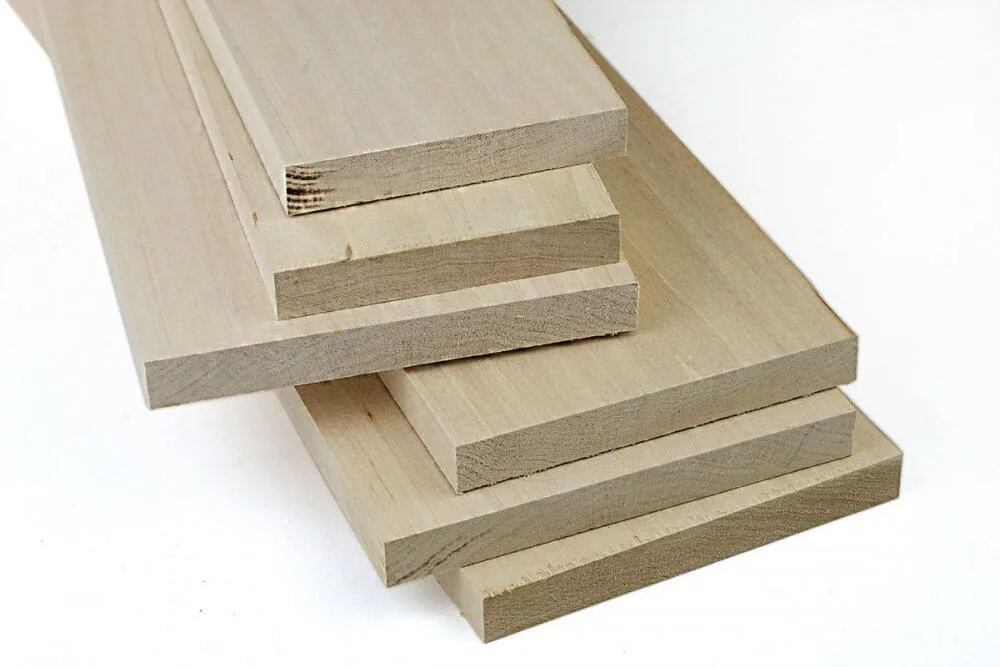
두 가지 모두가 필요한 건축 모델의 경우 힘 그리고 세부 사항, 목재 확실한 선택이다. 발사 그리고 참피나무 정밀한 생성을 위한 가장 인기 있는 옵션 중 두 가지는, 구조적 요소. 이 숲은 가볍다, 잘라 내기 쉽습니다, 그리고 완벽하게 샌딩할 수 있습니다, 문과 같은 복잡한 디자인에 이상적입니다., 창, 그리고 프레이밍. 이러한 전통적인 재료와 새로운 방법 사이의 선택은 당사의 가이드에서 탐구됩니다. 현대 공예 대. 전통적인 수작업.
- 장점: 자르기 쉬움, 가벼움에도 불구하고 내구성이 뛰어난, 세밀한 표면에 대한 미세한 질감을 가지고 있습니다..
- 단점: 대형 모델의 경우 비용이 많이 들 수 있으며 제대로 다루지 않으면 부서지거나 쪼개질 수 있습니다..
- 최상의 용도: 상세한 건축학적 특징 (창, 문, 몰딩) 추가적인 내구성이 필요한 모델의 구조적 구성요소.
판지/마분지: 일꾼
판지 (또는 마분지) 반짝이는 아크릴의 매력이 없을 수도 있습니다, 하지만 예산이 부족한 건축 모델 제작자에게는 검증된 제품입니다.. 가벼운 중량, 작업하기 쉽습니다, 그리고 저렴하다, 판지는 종종 초기 모델 및 매싱 연구를 위해 선택되는 재료입니다..
- 장점: 비용 효율적, 작업하기 쉽습니다, 두께와 마감이 다양합니다..
- 단점: 장거리용으로 제작되지 않음; 약할 수 있으며 강화하지 않으면 시간이 지남에 따라 구부러지거나 휘어질 수 있습니다..
- 최상의 용도: 기본 매싱 모델, 도로, 풍경, 대규모 컨텍스트 구성 요소.
코르크: 질감 있는 터치

그럴 때 질감, 코르크 소박함을 더하기 위한 재료입니다., 건축 모델에 대한 촉각 품질. 가볍다, 잘라 내기 쉽습니다, 디자인에 자연스러운 미학을 추가하는 데 적합합니다.. 창작을 하든 바닥 또는 기본 레이어, 코르크는 모델에 그런 느낌을 줍니다 나는 무엇을 모른다. 사실적인 지상피복을 연출하는데 탁월한 소재입니다., 우리가 다루는 주제 현실적인 모델 조경의 비밀.
- 장점: 가벼운 중량, 독특한 표면 질감을 제공합니다., 그리고 자르기도 쉽다.
- 단점: 쉽게 손상될 수 있음 (얼룩진, 찢어진, 또는 짓밟힌) 그리고 마무리에 주의가 필요합니다.
- 최상의 용도: 바닥재 또는 질감 표면, 자연 마감 또는 조경 세부 사항, 추가적인 디테일을 위한 베이스 레이어.
현대 재료: 뉴 키즈 온 더 블록
폼 보드: 가벼운 중량 & 무엇이든 준비되어 있습니다
폼 보드 건축 모형 제작의 필수 요소입니다., 특히 대규모로 생성해야 할 때 컨텍스트 모델 또는 대량 연구 빠르게. 가볍다, 잘라 내기 쉽습니다, 그리고 깨끗한 것을 제공합니다, 모델을 선명하고 전문적으로 보이게 만드는 날카로운 모서리. 당신이 작업하고 있는지 여부 배경 모델 또는 a 사이트 분석, 폼보드는 당신의 비전을 현실로 만들어주는 빠른 방법입니다.
- 장점: 빠른 작업, 무게에 비해 안정적이고 내구성이 뛰어남, 깨끗한 가장자리를 만듭니다..
- 단점: 주의해서 다루지 않으면 깨지기 쉬울 수 있습니다., 환경 변화에 민감하고.
- 최상의 용도: 대규모 컨텍스트 모델, 초기 단계 디자인 탐색, 보다 자세한 프리젠테이션을 위한 배경 모델 및 배경 모델.
아크릴 (플렉시글라스): 투명한 완벽함
당신이 찾고 있다면 매끄러운, 모델에 투명성과 빛을 추가하는 현대적인 소재, 아크릴 갈 길이야. 이 명확한, 플라스틱 소재는 표현에 적합합니다. 유리 정면, 창, 또는 기타 투명한 건축 요소. 을 더한, 광택이 나는 표면이 빛을 아름답게 반사합니다., 터치를 추가 사치 어떤 모델에도, 특히 우리 가이드의 사려 깊은 디자인과 짝을 이룰 때 조명의 전략적 활용.
- 장점: 투명한, 절단 및 성형에 다재다능함, 모던한 미학을 선사합니다.
- 단점: 적절하게 절단하려면 정밀성이 필요하며 쉽게 긁힐 수 있습니다..
- 최상의 용도: 유리 요소 (창, 문), 현대적인 디자인을 위한 매끄러운 마감, 빛과 상호작용해야 하는 장식 요소.
플라스틱: 입수 가능한 & 기능성
플라스틱 가장 많은 것 중 하나입니다 입수 가능한 그리고 변하기 쉬운 건축 모형용 재료. 건물을 짓고 있든 지형 모델 또는 풍경 요소, 플라스틱은 비용을 들이지 않고도 유연성을 제공합니다.. 가볍다, 튼튼한, 조작하기 쉽고, 빠른 속도가 필요한 대규모 프로젝트에 적합합니다., 비용 효율적인 솔루션.
- 장점: 가벼운 중량, 대규모 프로젝트에 적합한 가격, 성형 및 절단에 다재다능합니다..
- 단점: 특정 높이에 도달하려면 레이어링이 필요할 수 있으며 주의 깊게 사용하지 않으면 덜 세련되게 보일 수 있습니다..
- 최상의 용도: 지형 모델, 언덕과 도로 같은 풍경 요소, 그리고 더 큰, 비용 효율적이어야 하는 단순한 모델.
수지: 최고의 디테일
성취를 추구하는 사람들을 위해 복잡한 세부 사항, 수지 비법 소스예요. 이 소재는 미세한 질감을 복제하는 데 탁월합니다., 실물과 같은 창조 풍경, 그리고 심지어 공예까지 인형 또는 물 특징. 레진은 작업하는 데 더 비싸고 시간이 많이 걸릴 수 있지만, 결과는 노력한 만큼 가치가 있다, 특히 SLA 3D 프린팅의 정밀함으로 제작된 경우.
- 장점: 미세한 디테일과 질감을 포착하는 데 적합합니다., 거의 모든 모양에 맞게 사용자 정의 가능, 한 번 설정하면 내구성이 뛰어납니다..
- 단점: 비쌀 수 있습니다, 특히 대형 모델의 경우, 작업하는 데 시간이 많이 걸립니다.
- 최상의 용도: 소규모 디테일과 텍스처, 물 특징, 조경, 고급 프리젠테이션을 위한 사실적인 모델 생성.
금속 (알류미늄, 구리, 강철): 힘과 스타일의 만남
필요할 때 힘 그리고 복잡화, 금속 배달하다. 같은 재료 알류미늄, 구리, 그리고 강철 에 이상적입니다 구조적 세부 사항, 보강, 또는 고급 마감재를 대표하는. 이 금속은 우아한, 산업 어떤 모델이라도 느껴보세요, 현대적인 디자인에 완벽하게 어울립니다., 견고한 미적.
- 장점: 내구성과 안정성, 성형을 위해 가단성, 그리고 고급형을 제공합니다, 광택 마감.
- 단점: 작업하려면 특별한 도구와 전문 지식이 필요하며 비용이 많이 들 수 있습니다..
- 최상의 용도: 구조적 보강, 디테일한 고급 마감, 프레임과 같은 건축 요소, 기둥, 그리고 광선.
재료에 대한 이러한 포괄적인 시각은 모든 프로젝트에 필요한 다양성을 제공합니다.. 올바른 소재를 사용하면 디자인이 향상될 수 있습니다, 좀 더 자세하게 만들어서, 튼튼한, 그리고 시각적으로 충격적이다. 예산이 부족하든, 완벽을 목표로 하든, 각 재료의 장점과 단점을 이해하면 건축 모델이 인상적인 결과를 얻을 수 있습니다..
건축 모델을 위한 친환경적이고 지속 가능한 재료
생분해성 재료: 그린 이즈 더 뉴 블랙

지속 가능성은 단순한 유행어가 아닙니다. 미래 건축의. 세상이 푸르러질수록, 우리가 건축 모델을 만드는 방식도 마찬가지입니다.. 입력하다 생분해 성 물질—전통적인 소재를 좀 더 돋보이게 하는 친환경 영웅들... 구식. 이 물질은 지구에만 좋은 것이 아닙니다, 배달도 할 수 있어요 놀라운 결과 당신의 모델에서, 환경에 미치는 영향을 줄이면서 동시에.
- 예: 재활용 플라스틱, 식물성 폼 (옥수수 전분이나 버섯 균사체에서), 및 생분해성 수지.
- 장점: 친환경, 낭비를 줄인다, 친환경 건축 관행에 부합합니다..
- 단점: 항상 기존 소재만큼 내구성이 있거나 오래 지속되지 않을 수 있으며 고급 프리젠테이션 모델에 비해 세련된 외관이 부족할 수 있습니다..
- 최상의 용도: 지속 가능성에 중점을 두고 개념적 또는 친환경적 모델을 갖춘 프로젝트.
재활용 재료: 생명의 순환 (재료의 경우)
관심이 없다면 생분해 성 물질, 항상 확실한 대체가 있습니다: 재활용 재료. 이러한 자료는 진정한 재활용자 건축 세계의, 오래된 것을 가져다가 새 생명을 불어넣는다. 재활용 종이, 판지, 그리고 플라스틱 환경에 좋을 뿐만 아니라 다재다능하고 창조할 때 놀랍도록 효과적입니다. 개념적 그리고 구조적 모델.
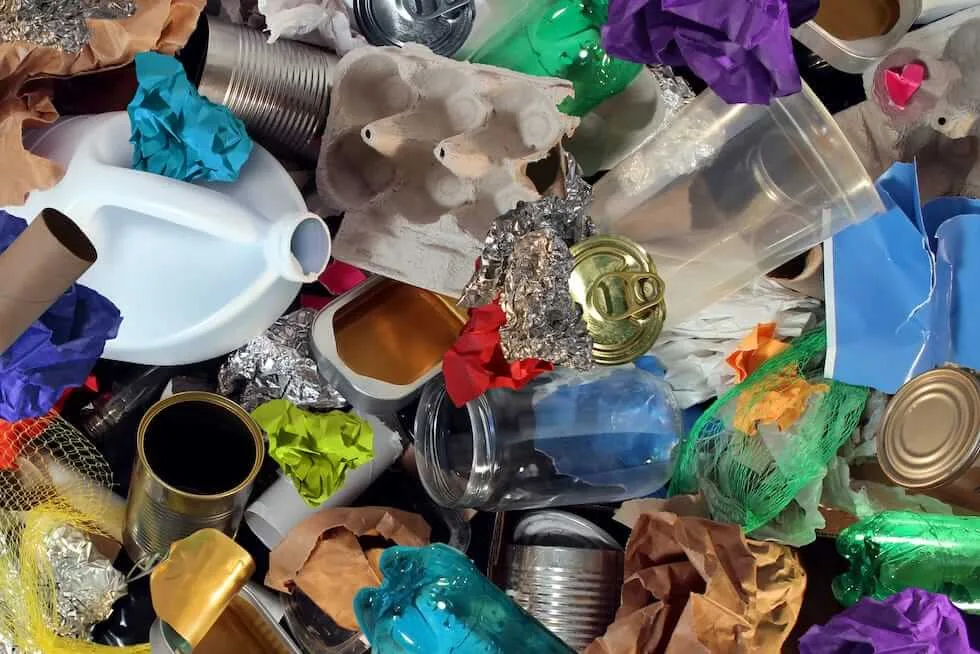
- 예: 재활용 종이/판지 및 재활용 플라스틱.
- 장점: 지속 가능한, 낭비를 줄인다, 강력한 친환경 디자인 메시지를 전달합니다..
- 최상의 용도: 소규모 개념 모델 및 환경에 민감한 프로젝트.
| 재료 유형 | 예 | 장점 | 최상의 용도 |
|---|---|---|---|
| 생분해성 재료 | 재활용 플라스틱, 식물성 폼, 생분해성 수지 | 친환경, 낭비를 줄인다, 친환경 건축 관행에 부합 | 환경 지속 가능성에 초점을 맞춘 프로젝트 |
| 재활용 재료 | 재활용 종이/판지, 재활용 플라스틱 | 지속 가능한, 낭비를 줄인다, 환경을 고려한 디자인 | 소규모 모델, 환경적으로 민감한 프로젝트 |
통합함으로써 생분해 성 그리고 재활용 재료, 건축가와 디자이너는 효과적이고 미학적으로 만족스러운 모델을 제공하면서 지속 가능성을 옹호할 수 있습니다.. 이러한 소재는 환경에 긍정적인 영향을 미친다고 해서 품질이나 창의성이 저하되는 것은 아니라는 점을 입증합니다..
상세한 건축 모델을 위한 특수 재료
유리: 최고의 투명성
목표로 삼고 계시다면 정도 그리고 실재론, 그 다음에 유리 재료 목록의 맨 위에 있어야 합니다.. 이 소재는 현실 세계의 창문에만 사용되는 것이 아닙니다. 투명한 특징 그리고 유리 정면 건축 모델에서. 건물이 태양 아래에서 빛나는 것처럼 보이거나 인공 조명 아래에서 반짝이는 것처럼 보이도록 만들고 싶습니다.? 유리는 당신의 티켓입니다 빛을 반사하는 그리고 투명성을 보여주는.
- 장점: 비교할 수 없는 선명도와 사실성.
- 단점: 깨지기 쉬우며 정밀성이 필요함, 전문적인 절단 기술.
- 최상의 용도: 유리 외관, 창, 문, 매끄럽고, 현대 건물.
합성섬유: 자연의 직물

때때로, 몇 가지 방법을 통해 모델을 한 단계 더 발전시켜야 합니다. 현실적인 질감. 입력하다 합성 직물, 추가할 때 알려지지 않은 영웅들 조경 기능 그리고 지형 텍스처. 구불구불한 언덕을 위한 것인지, 질감이 있는 표면, 아니면 반짝이는 물줄기, 합성 직물은 약간의 터치로 모델의 환경에 생기를 불어넣는 데 도움이 됩니다. 유연성 그리고 세부 사항.
- 장점: 소프트 복제 가능, 유기적인 질감을 사실적으로 구현하고 형태를 유연하게 만들 수 있습니다..
- 단점: 좁은 공간에 붙이거나 붙이기가 어려울 수 있습니다..
- 최상의 용도: 잔디나 들판과 같은 조경 특징, 수역 시뮬레이션, 그리고 다른 자연 지형을 만드는 것.
축광 재료: 어둠 속에서 빛나다? 예, 제발.
당신의 모델이 빛나는-문자 그대로? 그게 어디에 있습니다 축광 재료 놀러오다. 이 소재는 빛을 흡수했다가 불이 꺼지면 부드러운 빛의 형태로 방출됩니다.. 창작에 딱 맞습니다 극적인 조명 효과 또는 모델의 특정 기능을 강조 표시, 좋다 비상구 경로 또는 조명 시스템. 그들은 미래의 핵심 구성 요소입니다, 가이드에 자세히 설명된 대로 대화식 기술 및 AR.
- 장점: 드라마틱한 연출을 만들어낸다, 고유한 “우와” 어둠 속에서 요소 및 하이라이트 기능.
- 단점: 비용이 많이 들고 모든 프로젝트에 실용적이지 않을 수 있음.
- 최상의 용도: 조명 시스템 또는 비상구 강조 표시, 독특한 야간 시각 효과 만들기, 대화형 모델 만들기.
| 재료 유형 | 예 | 장점 | 최상의 용도 |
|---|---|---|---|
| 유리 | 투명한 요소, 유리 정면 | 명쾌함, 실재론, 반사 특성 | 창, 외관, 현대 건축 특징 |
| 합성섬유 | 조경 직물, 수역, 질감이 있는 표면 | 현실적인 질감, 유연성 | 지형 모델링, 조경 기능, 물 특징 |
| 축광 재료 | 야광 페인트 및 플라스틱 | 극적인 효과, 독특한 조명, 대화식 | 조명 시스템, 비상구, 야간 영상 |
통합 특수재료 추가하다 깊이, 실재론, 그리고 시각적 흥미. 당신이 목표로 삼고 있는 것인지 현대적인 우아함 매끄러운 유리 외관 또는 극적인 빛, 이러한 자료는 디자인을 향상시키고 더욱 역동적인 스토리를 전달하는 데 도움이 됩니다.. 올바른 도구와 약간의 창의성을 활용하면, 귀하의 모델은 정확할 뿐만 아니라 기이한.
건축 모델에 적합한 재료 선택
디자인 유형: 모델의 목적에 맞게 자료 조정
건축 모델에 완벽한 재료를 선택하는 것은 단지 보기에 좋아 보이는 것을 선택하는 것이 아니라 재료를 건축물에 맞추는 것입니다. 목적 모델의. 행사에 딱 맞는 신발을 고르는 것과 같다고 생각해보세요: 당신은 검은 넥타이 저녁 식사에 슬리퍼를 신지 않을 것입니다, 그리고 당신은 하이킹에 정장 구두를 신지 않을 것입니다 (당신이 패션을 선도하는 모험가가 아니라면). 건축 모델에도 동일하게 적용됩니다..
을 위한 개념 테스트, 속도와 유연성이 핵심입니다. 아이디어를 빠르게 탐색할 수 있는 자료가 필요합니다., 모양 테스트, 그리고 반복하다. 종이, 판지, 그리고 폼 보드 여기서 최선을 다하시겠습니까. 가볍다, 잘라 내기 쉽습니다, 그리고 올바른 버전을 선택하기 전에 몇 가지 버전을 버리는 것에 대해 죄책감을 느끼지 않을 만큼 충분히 저렴합니다..
본격적으로 해야 할 때, 그리고 모델은 다음을 향해 가고 있습니다. 프레젠테이션 또는 클라이언트 참여, 재료 선택이 더 세련되어야 합니다. 을 위한 높은 세부 모델 투자자나 이해관계자에게 깊은 인상을 주기 위해 사용될 것입니다., 같은 재료 목재, 아크릴, 그리고 수지 이상적이다. 이러한 소재는 더욱 세련되게 보일 뿐만 아니라, 하지만 그들은 또한 더 깨끗한 마무리 그리고 구조적 완전성. 클라이언트는 기대한다 복잡화 그리고 정도 이 단계에서는 자료가 이를 반영해야 합니다..
실제 고려 사항: 재료 선택의 물류
우리 모두는 좋은 디자인 도전을 좋아합니다, 하지만 현실이 되자—실용적인 사항 재료 선택에 큰 역할을 함. 내구성, 비용, 사용의 용이성, 그리고 유효성 당신을 안내하는 별이되어야합니다. 결국, 선택의 의미가 없어요 가장 멋진 재료 가격이 너무 비싸거나 작업하기 어려운 경우.
- 내구성: 재료가 얼마나 잘 견디나요?? 시간의 시험을 견딜 것인가, 아니면 깨지기 쉽고 손상되기 쉬운가요?? 장기 프로젝트의 경우, 목재, 아크릴, 그리고 금속 강력한 경쟁자입니다. 빠른 프로토타입을 만들거나 개념적 모델, 같은 재료 판지 그리고 거품 괜찮을지도 몰라, 하지만 영원히 지속되지는 않을 거예요.
- 비용: 예산이 중요한 역할을 함. 당신이 함께 일하고 있다면 제한된 자원, 품질을 희생하지 않는 비용 효율적인 재료를 선택하세요. 판지, 폼 보드, 그리고 재활용 재료 당신의 돈에 비해 많은 이익을 줄 수 있습니다.
- 사용 편의성: 일부 재료는 작업하기가 쉽습니다., 다른 사람들은 특별한 도구와 기술이 필요하지만. 폼 보드? 쉬운. 아크릴 또는 금속? 레이저 커터를 사용하거나 이에 대한 경험이 없으면 그리 많지 않습니다. 정밀 절단.
- 유효성: 필요한 자료를 쉽게 얻을 수 있는지 확인하세요.. 바쁘다면, 지역 철물점이나 미술 용품점을 방문하여 판지 그리고 폼 보드 전문 분야를 소싱하는 것보다 훨씬 쉽습니다. 수지 또는 금속.
기술과 도구: 복잡성으로 인해 또 다른 계층이 추가됩니다.
일부 재료는 다른 재료보다 작업하기가 더 복잡하다는 것은 비밀이 아닙니다.. 일부 레시피에는 수비드 기계가 필요한 것처럼 고급 소금을 뿌린다, 다른 사람들은 괜찮아 인스턴트 국수. 단순한 디자인으로 작업하고 마감 기한이 촉박한 경우, 재료의 복잡성은 별로 중요하지 않습니다.. 하지만 좀 더 자세히 알아보고 싶다면 뒤얽힌, 큰 총이나 최소한 적절한 도구를 꺼낼 준비를 하십시오..
일부 재료에는 특정 도구가 필요합니다., 그리고 당신이 그것들에 접근할 수 없다면, 결국 좌절할 수도 있다 (어쩌면 약간의 잘못된 컷이 있을 수도 있습니다). 아크릴 그리고 목재 접근할 수 있다면 함께 일할 수 있는 꿈이 될 수 있습니다. 레이저 커터 또는 정밀톱, 하지만 이 도구가 없으면, 금방 악몽이 될 수 있어. 같은 재료 거품 또는 판지? 관대하고 기본적인 공예용 칼과 가위로 조작하기 쉽습니다. 특별한 도구가 필요하지 않습니다..
재료가 복잡할수록, 더 많은 시간과 기능 당신은 필요합니다. 그래서, 자신에게 솔직해지세요: 도전할 준비가 되셨나요?? 필요한 도구가 있나요?? 확실하지 않은 경우, 뭔가 가지고 가는 게 나을지도 몰라 더 간단하다 그리고 더 용서한다.
클라이언트 환경 설정: 녹색 또는 깨끗함?
모든 고객이 미적인 부분에만 집중하는 것은 아닙니다.. 일부는 구체적인 철학 그들은 일치하고 싶어, 여기서 재료는 큰 역할을 할 수 있습니다. 환경을 생각하는 고객을 위한, 지속 가능한 그리고 재활용 재료 우선순위이다. 다른 사람들을 위해, 그들은 특별한 모습을 원할 수도 있습니다., 에이 세련된 모던한 마감 또는 a 거칠게 만든, 자연스러운 느낌.
- 친환경 소재: 지속가능성이 우선이라면, 통합하는 것을 생각해 보세요 생분해 성 물질, 재활용 종이, 목재, 또는 심지어 식물성 폼. 어울리는 디자인을 원하는 고객에게 적합합니다. 친환경 건축 관행 환경 관리.
- 미적 선호도: 일부 고객은 특정 재료의 미학을 선호할 수 있습니다. 고급 마감 좋다 아크릴 그리고 금속, 아니면 그들은 뭔가 느낌을 원한다 거친 그리고 진본인 좋다 목재 또는 코르크. 그들의 스타일을 이해하면 소재 선택에 도움이 됩니다..
| 고려 사항 | 명심해야 할 사항 | 이상적인 재료 |
|---|---|---|
| 디자인 유형 | 무대에 맞는 재료 선택 - 개념적, 일하고 있는, 또는 프리젠테이션. | 개념: 폼 보드, 판지; 프레젠테이션: 목재, 아크릴, 수지 |
| 실제 고려 사항 | 내구성, 비용, 사용의 용이성, 재료 선택 시 가용성과 가용성이 모두 중요합니다.. | 예산 친화적: 판지, 거품; 튼튼한: 목재, 아크릴, 금속 |
| 기술과 도구 | 재료에는 다양한 도구와 기술이 필요합니다. 자신의 능력을 솔직하게 표현하세요.. | 사용하기 쉽습니다: 폼 보드, 판지; 복잡한: 아크릴, 목재, 금속 |
| 클라이언트 환경 설정 | 환경을 고려한 디자인이나 특정 소재 선호도를 고려하세요.. | 친환경: 재활용 재료, 생분해성 옵션; 미적인: 아크릴, 목재 |
선택 올바른 재료 건축 모델은 가볍게 결정할 문제가 아닙니다.. 그것은 당신과 당신 사이의 완벽한 균형을 찾는 것입니다. 디자인 목표, 예산, 그리고 사용 가능한 도구. 조금 생각해보면, 빠른 개념 모델이든 고객을 놀라게 할 멋진 프레젠테이션이든 프로젝트에 완벽한 자료를 갖게 될 것입니다.. 그래서, 현명하게 선택하다, 그리고 기억해, 선택한 소재는 디자인 자체만큼 중요합니다.!
건축 모델 재료 작업에 대한 팁
자재 취급: 정밀하게 모델 제작
그럴 때 건축 모델 제작, 자재를 올바르게 취급하는 것은 전투의 절반. 커팅을 하든, 접착, 또는 마무리, 각 재료에는 고유한 특성이 있습니다., 그리고 그것을 마스터하는 것이 아마추어와 프로를 구별하는 것입니다. 케이크를 굽는 것처럼 생각해보세요. 재료를 함께 모아서 최고가 되기를 바랄 수는 없습니다.. 올바른 기술이 필요합니다, 도구, 그리고 약간의 정교함.
절단 재료:
자르기에 관해서는, 정확성이 핵심이다. 깔끔한 디자인에 들쭉날쭉한 가장자리가 생기고 싶지는 않습니다.. 종이용, 판지, 그리고 폼보드, 에이 날카로운 만능칼 당신의 가장 친한 친구입니다. 나무와 같은 두꺼운 재료로 작업하는 경우, 당신은 더 강한 것을 원할 것입니다.톱, 퍼즐, 아니면 심지어 레이저 커터 초미세 절단용. 항상 두 번 측정하세요., 한 번 자르다! 그리고 안전도 잊지 마세요. 안정적인 절단면을 사용하세요. (커팅매트처럼) 재료와 작업 표면을 모두 보호하기 위해.
접착재료:
재료를 서로 접착할 때, 오른쪽 점착제 모델을 만들거나 망칠 수 있습니다. 목재 접착제 놀라운 일을 해낸다 목재 그리고 발사 프로젝트, ~하는 동안 거품이 없는 접착제 거품 기반의 모든 제품에 적합합니다.. 강력 접착제는 조심하세요. 빠르고 강력합니다., 하지만 조심하지 않으면, 그것은 엉망이 될 수 있다. 아크릴 시멘트 아크릴에 꼭 필요한 접착제입니다. 녹다 가장자리가 약간, 거의 매끄러울 것 같은 강한 유대감을 형성함.
모델 마무리:
다 자르고 붙이고 나면, 모델에 깨끗한, 광택 마감. 목재용, 샌딩 거친 가장자리를 부드럽게 만드는 것이 핵심입니다. 아크릴 부드러운 천으로 닦거나 특수 연마제 그 반짝임을 위해, 전문적인 모습. 기억하다: 조금은 먼 길을 간다, 그러니 과용하지 않도록 주의하세요. 그렇지 않으면, 당신은 당신의 모든 노력을 사포질하는 자신을 발견하게 될 것입니다.
도구 및 장비: 작업에 적합한 도구
건축모델의 경우, 도구와 장비 실망스러운 실수와 순조로운 하루의 차이가 될 수 있습니다., 성공적인 프로젝트. 작업을 완료하기 위해 도구로 가득 찬 작업장이 필요하지 않습니다., 하지만 올바른 도구를 사용하면 인생이 훨씬 쉬워집니다..
아크릴용 레이저 절단기:
레이저 절단기는 건축 모델 제작 세계의 록스타입니다.. 그들은 당신이자를 수 있습니다 아크릴, 목재, 플라스틱, 그리고 심지어 얇은 금속 정밀하게. 이 기계는 레이저를 사용하여 완벽하게 만듭니다., 부드러운 컷, 불완전할 가능성을 줄임. 세부적인 작업을 하고 계시다면 프리젠테이션 모델, 레이저 커터는 당신이 좋은 것을 만드는 데 도움이 될 것입니다, 선명한 디테일을 쉽게.
폼보드용 폼커터:
빨리, 깔끔한 컷 폼 보드 또는 폴리스티렌, 에이 폼 커터 당신의 도구입니다. 이 도구는 가열된 와이어를 사용하여 버터를 뜨거운 칼로 자르듯 거품을 잘라냅니다.. 빠릅니다, 깨끗한, 그러면 작은 거품 부스러기 더미가 남지 않을 것입니다.. 환기가 잘 되는 곳에서 작업하세요. 탄 거품은 기분 좋은 냄새가 아닙니다..
종이 및 판지용 공예용 칼:
을 위한 종이, 판지, 그리고 마분지, 에이 공예 칼 당신의 가장 친한 친구입니다. 싸다, 믿을 수 있는, 그리고 통제하기 쉽습니다 복잡한 절단을 위해. 무뎌지지 않도록 새 칼날을 사용하십시오., 울퉁불퉁한 가장자리 - 결국, 모델의 마감은 사용하는 도구의 품질에 따라 달라집니다..
통치자, 템플릿, 및 메스:
절단을 하든, 측정을 하든, 정확성이 핵심이다. 좋은 금속 눈금자 당신의 절단이 직선인지 확인합니다, ~하는 동안 템플릿 당신이 얻을 수 있도록 도와주세요 일관된 모양 매번. 을 위한 상세한 컷 혹은 복잡한 디자인, 에이 메스 일반 공예용 칼보다 더 높은 정밀도를 제공합니다..
피해야 할 일반적인 실수: 전문가로부터 배우기 (그리고 실패)
노련한 전문가라도 모델 제작 중에 실수할 수 있습니다.. 하지만 조금으로 노하우, 좋은 모델을 재앙으로 만드는 초보 실수를 피할 수 있습니다. 다음은 일부입니다 일반적인 함정 조심하다:
고르지 못한 절단:
절단면이 고르지 않은 경우, 전체 모델이 엉성해 보이기 시작할 수 있습니다.. 나무를 자르든, 거품, 또는 아크릴, 두 번 측정하다, 한 번 자르다. 서두르지 마세요. 속도보다 정확성이 더 중요합니다.. 좋은, 깔끔한 절단은 조각이 완벽하게 결합된다는 것을 의미합니다., 장기적으로 시간과 좌절감을 줄여줍니다..
잘못된 접착제 사용:
모든 접착제가 동일하게 생성되는 것은 아닙니다.. 잘못된 접착제를 사용하면 보기 흉한 표시, 약한 결합, 또는 끈적끈적한 엉망. 예를 들어, 사용 PVA 접착제 ~에 아크릴 흐려질 수 있습니다, 고르지 않은 솔기. 아크릴 시멘트 또는 거품이 없는 접착제 트릭을 할 것입니다. 라벨을 꼭 읽어보세요, 전체 모델을 완성하기 전에 항상 스크랩 조각에 접착제를 테스트해 보세요..
자재 수량을 잘못 계산함:
모델을 만들 때 가장 실망스러운 것 중 하나는 중간에 재료가 부족하다는 것입니다.. 당신은 당신의 작품을 만드는 중간에 있고 싶지 않습니다 걸작, 폼이나 아크릴 패널 몇 장만 있으면 부족하다는 사실을 깨닫습니다.. 이를 방지하려면, 미리 계획하다— 실수를 설명하기 위해 측정하고 추가 자료를 고려하십시오., 시험편, 아니면 디자인이 바뀌거나.
재료 수축을 고려하지 않음:
다음과 같은 특정 재료 거품 또는 플라스틱 환경에 따라 줄어들거나 늘어날 수 있습니다.. 조각을 접착하는 경우 다음과 같은 가능성이 있습니다. 수축, 일단 설정되면 간격이나 정렬 불량이 발생하게 됩니다.. 모델을 측정하고 조립할 때 항상 이러한 요소를 고려하십시오..
| 실수 | 피해야 할 사항 | 문제를 해결하는 방법 |
|---|---|---|
| 고르지 못한 절단 | 절단을 서두르거나 잘못된 도구를 사용하여. | 날카로운 공예용 칼을 사용하세요, 두 번 측정하다, 그리고 천천히 자르세요. |
| 잘못된 접착제 | 재료에 맞지 않는 접착제 사용. | 재료 유형에 따라 접착제를 선택하십시오. (예를 들어, 아크릴용 아크릴 시멘트). |
| 수량을 잘못 계산함 | 프로젝트 도중 재료 부족. | 미리 계획하세요, 두 번 측정하다, 그리고 추가재료 구매. |
| 재료 수축 | 특정 재료의 수축 또는 팽창 무시. | 설계 및 조립 시 재료 거동 고려. |
이 팁을 따르면, 당신은 다음과 같은 건축 모델을 만드는 데 성공할 것입니다. 정밀한, 전문적인, 그리고 튼튼한. 재료를 다루는 기술을 마스터하세요, 올바른 도구를 사용하여, 일반적인 실수를 피하고, 그러면 귀하의 모델은 모든 정당한 이유로 눈에 띄게 될 것입니다. 올바른 준비로, 그 보잘것없는 덩어리의 폼이나 아크릴을 모델링 걸작 디자인과 실행이 빛나는.
결론: 건축 모델을 위한 완벽한 재료 선택
요약: 올바른 무대에 적합한 재료
선택 완벽한 소재 건축 모델의 경우 마라톤에 적합한 신발을 선택하는 것과 같습니다. 26마일 달리기에는 슬리퍼를 신지 않을 것입니다., 오른쪽? 선택한 자료는 프로젝트 단계와 일치해야 합니다., 수준도 그렇고 세부 사항, 내구성, 그리고 미적 매력 필수의.
조기용 개념적 모델, 가볍게 생각하다, 값이 싼, 그리고 유연하다. 종이, 폼 보드, 그리고 판지 매스작업을 빠르게 탐색할 수 있습니다., 모양, 디테일에 얽매이지 않고 형태를 잡아. 하지만 디자인이 성숙해짐에 따라, 재료 선택도 마찬가지여야 합니다. 목재, 아크릴, 그리고 수지 에 완벽합니다 작업 모델 그리고 프리젠 테이션 조각 디자인의 세련미를 보여줘야 하는, 추가 광택 그리고 정도 고객과 이해관계자가 보고 싶어하는 것.
재료를 선택하는 것은 단지 종이에 보기 좋게 보이는 것만이 아닙니다. (말장난 의도), 하지만 그들이 서비스를 제공하는지 확인하는 것에 대해서는 프로젝트의 목적 가능한 가장 효과적인 방법으로 아이디어를 실현하세요.. 항상 가장 비싸거나 멋진 재료를 선택하는 것은 아닙니다.; 이는 현재 작업에 적합한 재료를 선택하는 것입니다..
최종 생각: 실험, 놀다, 더 나은 모델 구축
건축 모형 제작의 장점은 실험 대략 그렇듯이 정도. 재료를 가지고 장난치는 것을 두려워하지 마세요, 믹스 앤 매치, 다양한 물질이 디자인 아이디어와 어떻게 상호작용하는지 확인하세요.. 노련한 프로이든 이제 막 시작하든 상관없습니다., 새로운 재료를 탐색하면 모델이 "좋음"에서 "와우"로 향상될 수 있습니다.
최고의 아이디어 중 일부는 예상치 못한 곳에서 나옵니다. 생분해성 폼 또는 재활용 플라스틱 신선한 것을 가져올 수있다, 다음 프로젝트를 위한 지속 가능한 터치. 세계 모형 제작 재료 광대하고 아직 개발되지 않은 잠재력으로 가득 차 있습니다.. 그래서, 새로운 것에 뛰어드는 게 어때?? 실험은 귀하의 특정 요구 사항에 딱 맞는 것을 찾는 데 도움이 되며 그 과정에서 더 많은 창의성을 촉발할 가능성이 높습니다..
행동 촉구: 전문가의 도움이나 새로운 재료로 디자인을 향상시키세요
모델을 다음 단계로 끌어올릴 준비가 되었습니다? 모험심이 느껴진다면 (아니면 그냥 전문가의 손길이 필요해), 항상 전문적인 것을 탐구할 수 있는 옵션이 있습니다 모델 제작 서비스. 이러한 서비스는 수년간의 경험과 고급 도구를 제공합니다., 모델이 완벽하다는 보장.
또는, 좀 더 DIY를 하고 싶다면, 새로운 재료를 실험하다. 생분해성 수지, 3D 프린트 요소, 또는 다음과 같은 색다른 옵션도 있습니다. 축광 재료 건축 모델 제작에서 가능한 것의 경계를 넓히는 데 꼭 필요한 것일 수도 있습니다.. 손을 더럽히세요, 창의력을 발휘하다, 디자인 표현을 새로운 차원으로 끌어올리세요!
선택 올바른 재료 모든 경우에 적용되는 일률적인 접근 방식이 아닙니다. 프로젝트의 내용에 재료를 맞추는 것입니다. 단계, 목적, 그리고 미적 요구. 따라서 개념적 디자인을 다루든 프레젠테이션 모델을 미세 조정하든 상관없습니다., 올바른 재료가 모든 차이를 만들 수 있습니다. 실험, 탐구하다, 귀하의 건축적 비전을 현실화하는 데 도움이 되는 자료를 활용하세요.
FAQ: 건축 모델용 재료에 대해 알아야 할 모든 것
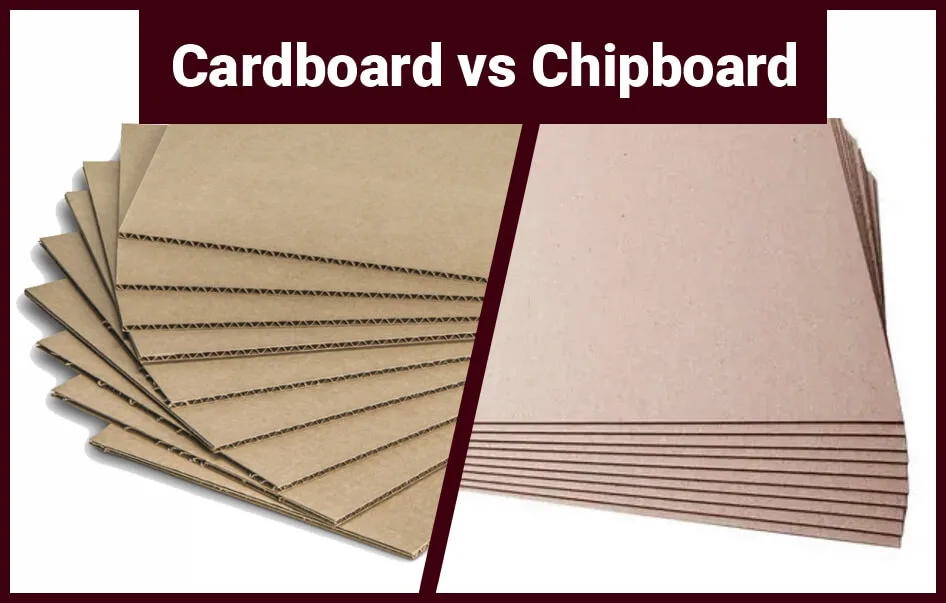
건축 모델에 가장 적합한 재료는 무엇입니까?
건축 모델에 가장 적합한 재료는 다음에 따라 달라집니다. 목적 모델의 단계와 디자인 과정의 단계. 을 위한 개념적 모델, 같은 재료 폼 보드, 판지, 그리고 종이 그들은 완벽하기 때문에 완벽합니다 비용 효율적, 조작하기 쉬움, 그리고 빨리 작업할 수 있어요. 더 많은 곳으로 이동하면서 상세 또는 프리젠테이션 모델, 다음과 같은 재료로 업그레이드하고 싶을 것입니다. 아크릴, 목재, 그리고 수지, 더 많은 것을 제공하는 것 정제, 내구성, 그리고 정도. 귀하의 모델이 모든 것에 관한 것이라면 실재론 그리고 현대적인 마감, 금속 그리고 유리 확실히 당신의 목록에 있어야합니다.
을 위한 환경을 생각하는 프로젝트, 생분해 성 물질, 재활용 플라스틱, 그리고 식물성 폼 점점 인기를 얻고 있어요. 이러한 소재는 환경에 미치는 영향을 줄일 뿐만 아니라 독특한 터치 당신의 모델에게, 지속 가능성에 대한 귀하의 의지를 보여줍니다..
건축 모델용 재료를 선택하는 방법?
건축 모델에 적합한 재료를 선택하는 것은 올바른 재료를 선택하는 것과 같습니다. 도구 작업을 위해 - 모든 자료에는 목적이 있습니다, 필요한 것이 무엇인지 아는 것이 전투의 절반입니다. 다음은 핵심 요소 고려하다:
- 프로젝트 단계: 당신이 초기 개념 단계, 가다 유연한, 저렴한 재료 좋다 판지 그리고 거품. 디자인이 성숙해지면, 높은 세부 사항 같은 재료 아크릴 그리고 목재 더 적절할 것입니다.
- 예산: 재료비 차이가 많이 나요, 그러니 당신의 예산 제약. 내부 테스트용 모델로 큰 돈을 낭비하고 싶지는 않을 것입니다..
- 시간 제약: 일정이 빡빡하다면, 빠르고 쉽게 작업할 수 있는 재료를 사용하세요., 좋다 폼 보드 또는 판지. 더 복잡한 모델의 경우, 같은 재료 아크릴 또는 목재 더 많은 시간과 노력이 필요하다.
- 디자인 의도: 모델이 전달해야 하는 내용에 대해 생각해 보세요.. 선보이고 싶다면 현대의 또는 매끄러운 미학, 아크릴 그리고 금속 당신의 재료는 당신의 재료입니까. 을 위한 거칠게 만든 또는 자연스러운 디자인, 목재 그리고 코르크 놀라운 일이 일어날 것이다.
프리젠테이션을 위한 건축 모델에 사용되는 재료?
그런 모델이 필요할 때 감동을 준다 클라이언트, 이해 관계자, 또는 투자자, 재료 선택이 중요해진다. 프리젠테이션 모델 수요 높은 정밀도, 깔끔한 마감, 그리고 강조하는 능력 주요 디자인 특징.
- 아크릴: 창문 및 정면과 같은 투명한 요소에 이상적, 아크릴 제공합니다 매끄러운, 세련된 모습 모델에 현대적인 느낌을 주는.
- 목재: 베이스 우드 그리고 발사 나무 가벼우면서도 내구성이 좋습니다, 만들기에 완벽한 복잡한 세부 사항 프레이밍과 같은, 문, 그리고 창문.
- 수지: 추가용 소규모 디테일 인형처럼, 조경, 아니면 심지어 물 특징, 수지 을 허용 높은 정확도 그리고 커스터마이징.
- 금속: 추가가 필요한 모델의 경우 힘 아니면 좀 더 반영해서 산업적인 모습, 같은 금속 알류미늄 또는 강철 구조적 요소와 고급 마감재에 적합합니다..
- 폼 보드: 대형의 경우, 기본 컨텍스트 모델 또는 매스 연구, 폼 보드 비용 효율적이고 작업하기 쉽습니다..
당신이 선택한 소재는 당신의 디자인을 더욱 돋보이게 할 것입니다, 그것을 만드는 눈에 띄다 그리고 큰 소리로 말하다 그것을 보는 사람들에게.
건축 모형에 어떤 친환경 소재를 사용할 수 있나요??
지속가능성은 더 이상 단순한 트렌드가 아니라 필수입니다.. 다행스럽게도, 범위가 점점 더 넓어지고 있어요 친환경 자료 건축 모형 제작에 딱 맞는. 이러한 재료는 탄소 배출량을 줄일 뿐만 아니라 독특한 미학 당신의 디자인에.
- 생분해성 재료: 다음과 같은 옵션 식물성 폼 그리고 생분해성 수지 기존 플라스틱에 대한 지속 가능한 대안 제공, 그리고 그들은 여전히 세부 사항 그리고 정도 고품질 모델에 필요한.
- 재활용 플라스틱: 사용하여 재활용 플라스틱, 당신은 오래된 자료에 두 번째 생명을 불어넣고 있습니다, 유지하는 동시에 내구성 그리고 힘 모델의 구조 요소에 필요.
- 재활용 종이/판지: 이러한 자료는 널리 사용 가능합니다., 비용 효율적, 개념적 또는 소규모 모델에 적합합니다.. 선택하여 재활용 종이 또는 판지, 타협하지 않고 지속 가능한 원칙에 충실할 수 있습니다. 모델 품질.
- 재활용 목재: 환경을 고려하면서 자연스러운 느낌을 더하고 싶은 분들을 위해, 재활용 목재 훌륭한 옵션입니다. 그것은 동일한 것을 제공합니다 따뜻함 그리고 조직 새 나무로서, 하지만 나무를 자르는 것이 환경에 미치는 영향은 없습니다..
이러한 친환경 소재를 선택하면 지속 가능성 목표 계속 생산하는 동안 집중 상세한, 고품질 모델.
